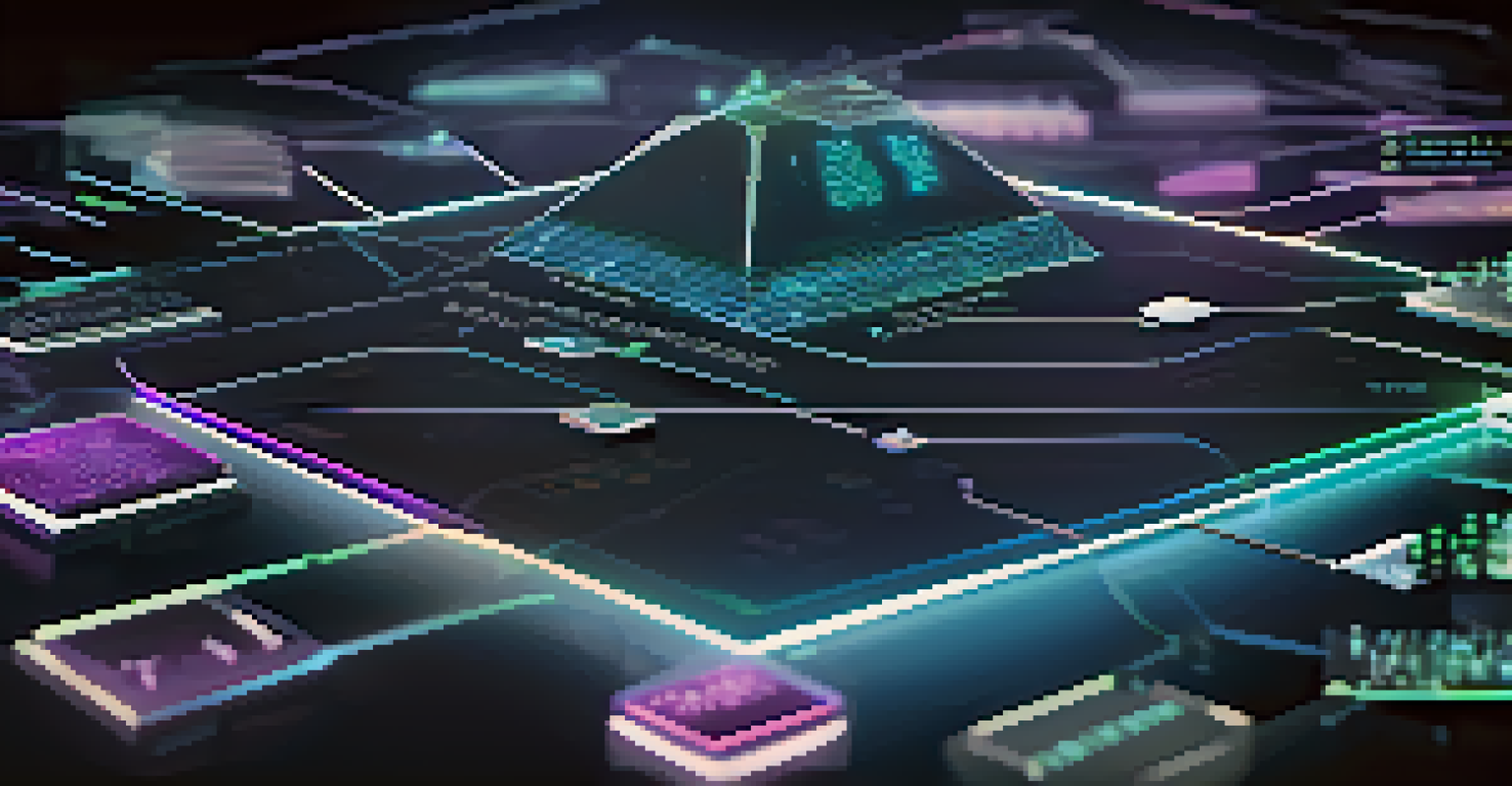Decentralization and NFTs: Enhancing Digital Asset Security

Understanding Decentralization in the Digital Age
Decentralization refers to the distribution of authority, moving away from a central point of control. In the context of digital assets, it means that no single entity governs or manages these assets, making them more resilient to failures or attacks. This approach is crucial in today's digital landscape, where data breaches and centralized failures can have severe consequences for asset security.
Decentralization is the future of the internet, where users regain control of their data and assets.
For example, traditional banking systems are centralized, meaning they can be vulnerable to hacks or regulatory issues. In contrast, decentralized systems, such as those used in blockchain technology, spread the risk across many nodes. This ensures that even if one node is compromised, the overall system remains secure, providing a robust foundation for digital asset ownership.
By embracing decentralization, users can engage with digital assets like NFTs with greater confidence, knowing that their ownership is validated by a network, rather than a single authority. This shift not only protects individual assets but also fosters a more equitable digital economy.
What Are NFTs and Their Role in Digital Assets?
NFTs, or non-fungible tokens, are unique digital assets verified using blockchain technology. Unlike cryptocurrencies like Bitcoin, which are interchangeable, each NFT has distinct characteristics, making it irreplaceable. This uniqueness is what drives their value, whether in art, music, or virtual real estate.

Consider the world of digital art, where artists can tokenize their work into NFTs. This process not only proves authenticity but also allows creators to receive royalties whenever their work is resold. This model empowers artists and ensures they are compensated fairly for their creations, showcasing the transformative potential of NFTs in the digital economy.
Decentralization Strengthens Security
Decentralization enhances the security of digital assets like NFTs by distributing authority and reducing risks associated with centralized control.
As NFTs continue to gain popularity, their application is expanding beyond art into areas like gaming, fashion, and even real estate. This versatility highlights the growing importance of NFTs in representing ownership and value within the digital space, making them a pivotal part of the decentralization narrative.
How Decentralization Enhances NFT Security
One of the most significant advantages of decentralization is enhanced security for NFTs. Since NFTs are stored on a blockchain, they benefit from cryptographic techniques that make tampering nearly impossible. This decentralized ledger ensures that once a transaction is recorded, it cannot be altered, providing a trustworthy environment for digital asset ownership.
NFTs are not just a trend; they are a representation of ownership and authenticity in the digital world.
For instance, if you purchase an NFT, the transaction is permanently recorded on the blockchain, visible to anyone but immutable. This transparency not only verifies your ownership but also protects against fraud and counterfeiting. In a world where digital art can be easily copied, this level of security is vital for both creators and collectors.
Moreover, decentralization means that there is no single point of failure. If a centralized platform were to go down or be attacked, users could lose access to their NFTs. However, with decentralized platforms, assets remain accessible as long as the blockchain exists, significantly reducing the risk of loss.
The Role of Smart Contracts in NFT Security
Smart contracts are self-executing contracts with the terms of the agreement directly written into code. In the NFT space, these contracts automate processes and enhance security by ensuring that transactions follow predetermined rules without the need for intermediaries. This reduces the possibility of human error or fraud.
For example, a smart contract can automatically transfer ownership of an NFT once payment is received. This not only streamlines the buying process but also guarantees that both parties fulfill their obligations. Such automation is a game-changer for the digital asset market, ensuring a secure and efficient transaction process.
NFTs Empower Creators Economically
Through unique characteristics and smart contracts, NFTs provide artists with a new way to monetize their work and receive ongoing royalties.
Additionally, smart contracts can be programmed to include royalties for creators on secondary sales, ensuring that artists continue to benefit as their work appreciates in value. This feature underscores the innovative synergy between decentralization and NFTs, highlighting how technology can protect and empower creators.
Decentralized Storage Solutions for NFTs
While blockchain technology secures the ownership of NFTs, the actual digital files often need to be stored elsewhere. This is where decentralized storage solutions come into play. These systems, like IPFS (InterPlanetary File System), distribute files across a network rather than relying on a single server, enhancing security and accessibility.
Using decentralized storage for NFTs ensures that the associated digital assets remain available even if one node goes offline. This redundancy means that creators and collectors can have peace of mind knowing their valuable digital art or assets won't disappear due to server failures or other issues.
Furthermore, decentralized storage enhances the longevity of NFTs. By removing reliance on centralized servers, which can be vulnerable to data loss, NFTs stored on decentralized networks are more likely to endure over time, preserving their value and significance in the digital landscape.
Challenges and Considerations in Decentralization
While decentralization offers numerous benefits for NFT security, it’s not without its challenges. One major concern is the complexity of managing private keys, which are essential for accessing your digital assets. If you lose your private key, there's no way to recover your NFTs, highlighting the importance of diligent management.
Additionally, the user experience on decentralized platforms can sometimes be less intuitive than centralized alternatives. New users may find the process of buying, selling, or transferring NFTs confusing, which could deter them from fully engaging in the market. Education and user-friendly interfaces are crucial to overcoming these barriers.
Future Growth in Decentralized Assets
The intersection of decentralization and NFTs is expected to grow, leading to a more secure and equitable digital economy.
Lastly, while decentralization improves security, it does not eliminate all risks. Users must remain vigilant against phishing attacks or scams that can occur in the digital space. Understanding the landscape and taking precautions can help individuals safeguard their digital assets effectively.
The Future of Decentralization and NFTs
As the digital landscape evolves, the intersection of decentralization and NFTs is poised for significant growth. More artists, brands, and individuals are recognizing the value of decentralized systems in protecting their digital assets. This trend is likely to continue, creating a robust ecosystem that prioritizes security and ownership.
Emerging technologies, such as Layer 2 solutions and interoperability between blockchains, will further enhance the NFT experience. These advancements promise faster transactions and lower fees, encouraging broader adoption and use of NFTs across various sectors. The future looks bright for creators and collectors alike.

Ultimately, as we move forward, the combination of decentralization and NFTs will play a critical role in shaping the digital economy. By fostering an environment that prioritizes security, transparency, and fairness, we can expect to see a revolution in how we perceive and engage with digital assets.